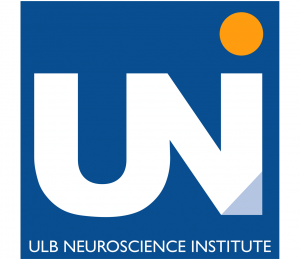The ULB is demonstrating great innovation with the newly inaugurated ULB Neuroscience Institute (UNI) by taking into account the dimensions of the brain’s complexity, from molecular neuroscience to cognitive neuroscience, via neurophysiology and neuroimaging and uniting these disciplines in a unique Neuroscience Institute.
For neuroscientists, two of the most compelling and difficult challenges facing neuroscience today are understanding how a brain develops and the way it functions. Furthermore, in order to explain how the brain works or how it malfunctions, researchers specializing in different areas need to work on identifying mechanisms at a range of levels; from genes to neurons, from neurons to neuronal circuits; and from neuronal circuits to perception, behavior and consciousness.
A wonderful new development has led to the unification of these disciplines in one research institute – UNI*, the ULB Neuroscience Institute at the Université Libre de Bruxelles. The Institute is an assembly of 17 different research groups, involving more than 150 researchers from 4 ULB Faculties (Medicine, Science, Motor Sciences, Psychology and Education) and has been developed with the support of the ULB Foundation, the FNRS, the “Interuniversity Attraction Poles”, the Brussels-Capital Region, the Region of Wallonia, WELBIO, the 7th EU Framework Programme and the Queen Elisabeth Medical Foundation.
To date, collaborative projects are already underway among these teams of cognitive psychologists, neuropsychologists, neuroclinicians, cellular and molecular neurobiologists, neurogeneticists, etc. comprising joint research projects and shared technology platforms. The specific technological platforms comprise a medical neuroimaging platform (nuclear magnetic resonance, PETSCAN and magnetoencephalography), a microscopic imaging platform (confocal microscopy, real-time microscopy, multiphoton microscopy, analytical and reconstruction tools), and a transgenesis patform.
A recent video created by ULB Research Communication Department on the Magnetoencephalography Unit (MEG) is just one example of how such technologies are being put to use in efforts to better
understand the complexity of the brain and how it functions. Watch Video
Projects and other innovative breakthroughs can be expected to continue through the development of transdisciplinary scientific seminars held at UNI, the setting up of collaborative research projects, the acquisition of technological equipment and the hiring of logistic staff of joint interest to the different disciplines.
Not only is this a great example of open innovation for the ULB but also it will be wonderful to see what the UNI could bring to Life Sciences in the future.
*To promote success in this area, UNI has launched its “International PhD Program in Neuroscience”, under which selected doctoral students will receive a scholarship to study in a UNI laboratory (of their choice) in the heart of Brussels.

Sources:
UNI
Contact:
UNI
Pierre Vanderhaeghen (UNI Director)
ULB
Research Communication :
Nathalie Gobbe
Tél
GSM























